Welfare Aspects of Broiler Breeder Feeding Regimes

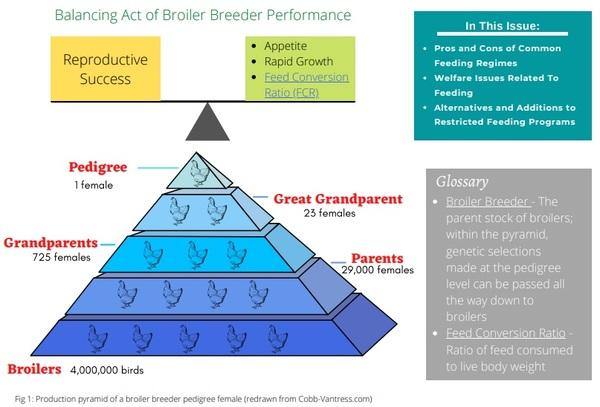
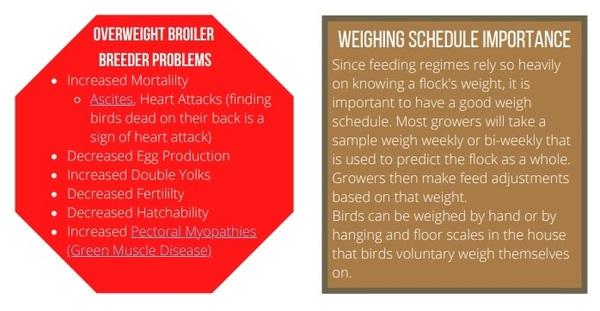
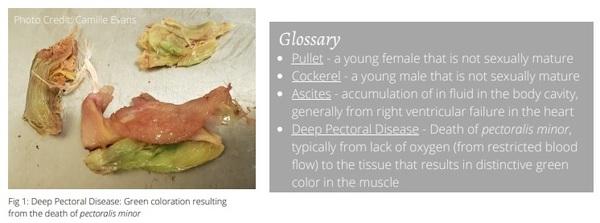

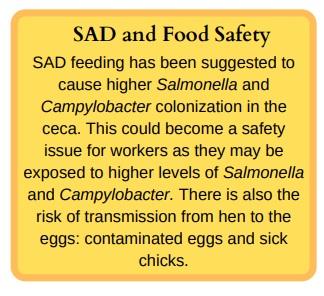

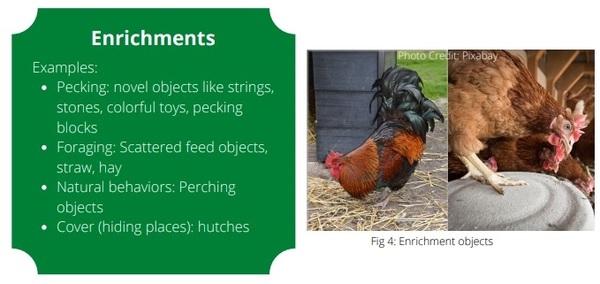
- Broiler breeders are feed restricted during growth using ED or SAD feeding program
- SAD feeding subjects the birds to longer periods without feed causing chronic hunger
- ED feeding provides birds with daily access of feed but at a reduced amount of their daily need. ED feeding can come at a cost of reduced flock uniformity
- Further research to identify appropriate qualitative feed restriction methods and relevant environmental enrichments are warranted
C.D. Aranibar, C. Chen, A.J. Davis, W.I. Daley, C. Dunkley, W.K. Kim, C. Usher, A.B. Webster, J.L. Wilson. Impact of an alternate feeding program on broiler breeder pullet behavior, performance and plasma corticosterone, Poultry Science, Volume 99, Issue 2, 2020, Pages 829-838, ISSN 0032-5791, https://doi.org/10.1016/j.psj.2019.12.025.
A. Arrazola. “Feeding Management of Broiler Breeders.” Zootecnica International, 31 Dec. 2018, https://zootecnicainternational.com/featured/feeding-management-broiler-breeders/.
A. Arrazola, S. Torrey. Welfare and performance of slower growing broiler breeders during rearing, Poultry Science, Volume 100, Issue 11, 2021, 101434, ISSN 0032-5791, https://doi.org/10.1016/j.psj.2021.101434.
A. Arrazola, T.M. Widowski, M.T. Guerin, E.G. Kiarie, S. Torrey. The effect of alternative feeding strategies for broiler breeder pullets: 2. Welfare and performance during lay. Poultry science, 98(12), 2019, 6205–6216. https://doi.org/10.3382/ps/pez447.
R. K. Bramwell. Skip-a-Day and Everyday Feed Programs for Broiler Breeders in the Hen House. Avian Advice, Volume 10, Issue 2, Summer 2008, Pages 4-5, https://scholarworks.uark.edu/cgi/viewcontent.cgi? article=1025&context=avian-advice.
P. Carneiro, R. Lunedo, M.F.F Alarcon, G. Baldissera, G.G. Freitas, M. Macari. Effect of different feed restriction programs on the performance and reproductive traits of broiler breeders. 2019. Poultry Science. 98. 10.3382/ps/pez181.
Cobb-Vantress Breeder Management Guide. https://www.cobb-vantress.com/assets/Cobb-Files/managementguides/ca1b2a76ed/Cobb-Breeder-Management-Guide.pdf?ref=hero.
M. de Beer, C.N. Coon. The Effect of Different Feed Restriction Programs on Reproductive Performance, Efficiency, Frame Size, and Uniformity in Broiler Breeder Hens, Poultry Science, Volume 86, Issue 9, 2007, Pages 1927-1939, ISSN 0032-5791, https://doi.org/10.1093/ps/86.9.1927.
I.C. de Jong, D. Guémené. Welfare issues in broiler breeders. 8th European Symposium on Poultry Welfare, 18-22 May 2009, pp: 120-127.
S.H. Esmail. “Feed Restriction in Broiler Production.” PoultryWorld, 21 Mar. 2018, https://www.poultryworld.net/Nutrition/Articles/2018/3/Feed-restriction-in-broiler-production-262439E/.
S.H. Hadinia, P. Carneiro, C.A. Ouellette, M.J. Zuidhof. Energy partitioning by broiler breeder pullets in skip-a-day and precision feeding systems. Poultry science, 97(12), 2018, 4279–4289. https://doi.org/10.3382/ps/pey283.
T. Hein. “A Look at Skip-Day Feeding.” Canadian Poultry Magazine, 18 Oct. 2018, https://www.canadianpoultrymag.com/a-look-at-skip-day-feeding-30790/.
I. Jong, S. Voorst, D.A. Ehlhardt, H. Blokhuis. Effects of restricted feeding on physiological stress parameters in growing broiler breeders. British poultry science. 43. 157-68. 2002. 10.1080/00071660120121355.
C. Lindholm, A. Johansson, A. Middelkoop, J.J. Lees, N. Yngwe, E. Berndtson, G. Cooper, J. Altimiras, The Quest for Welfare-Friendly Feeding of Broiler Breeders: Effects of Daily vs. 5:2 Feed Restriction Schedules, Poultry Science, Volume 97, Issue 2, 2018, Pages 368-377, ISSN 0032-5791, https://doi.org/10.3382/ps/pex326.
J.A. Mench. Broiler breeders: feed restriction and welfare, World's Poultry Science Journal, 58:1, 23-29, 2002, DOI: 10.1079/WPS20020004.
F.M. Tahamtani, H. Moradi, A.B. Riber. Effect of Qualitative Feed Restriction in Broiler Breeder Pullets on Stress and Clinical Welfare Indicators. Front. Vet. Sci. 7:316. 2020. doi: 10.3389/fvets.2020.00316.
R.E.A Forder, M. Lane. “Maternal Stress, the Potential Impact on Broiler Breeders and Subsequent ChickDevelopment.” Zootecnica International, 13 Sept. 2021, https://zootecnicainternational.com/featured/maternalstress-the-potential-impact-on-broiler-breeders-and-subsequent-chick-development/.




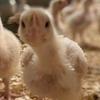







.jpg&w=3840&q=75)